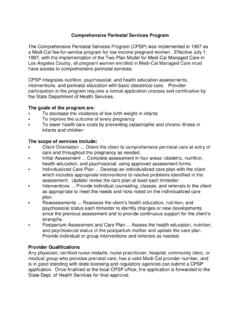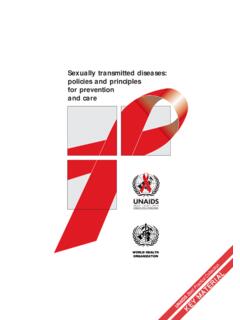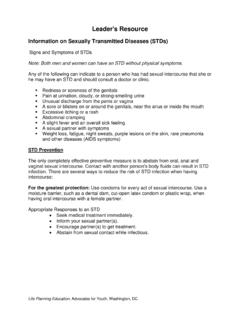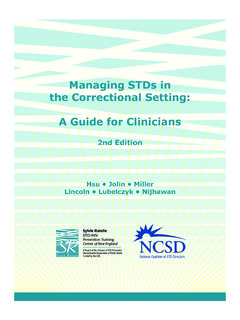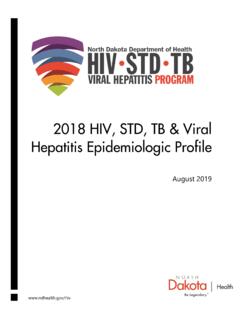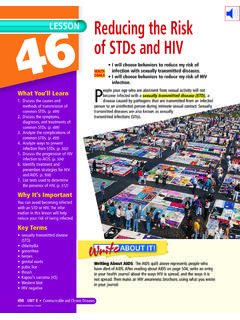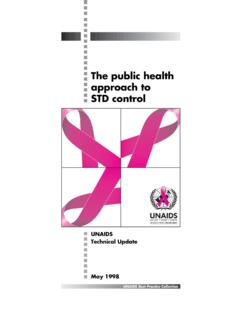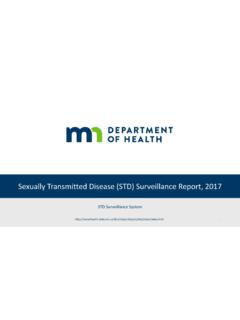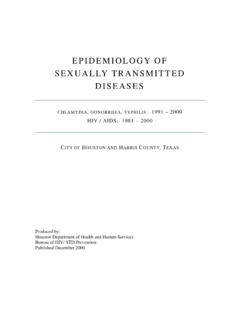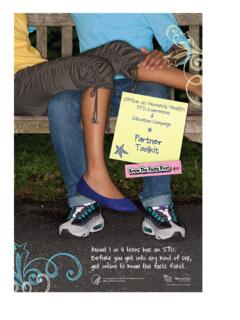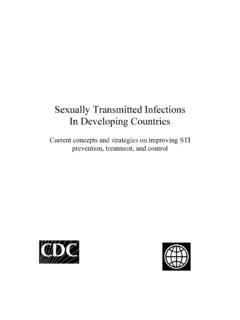Transcription of Applying Behavior Change Theory to STD …
1 Applying Behavior Change Theory to STD prevention & EducationBetsy Swanson Hollinger, MPHD irector, Health education UnitLos Angeles County STD ProgramObjectivesBy the end of the session participants will be able to: Explain 3 theories of Behavior Change used in STD prevention and education Name at least 2 STDP Health education programs/services and their underlying theories Define and give one example of a CDC level DEBIA pplying Theory to Practice Theories Health Belief Stages of Change Social Learning Theory Examples of the practical application of these to STD prevention and education STD Program CDC Diffusions of Effective Behavioral Interventions (DEBIs)Changing Individual Behavior Knowledge Attitudes Perceived vulnerability Skills Self-efficacy ReinforcementThe Health Belief Model* Knowledge of STD transmissionoOral, anal, vaginal sex (asymptomatic)
2 Perception of SusceptibilityoChance of exposureto STD andoChance of infection if exposed Perception of SeverityoConsequences and their likelihoodoSeriousness of consequences*Refer to Glanz et al: Health Behavior and Health education , 1997 Application of the HBM to STD education Found in: Trainings, Hotline, and Materials Perception of Susceptibility: 1 in 2 will contract an STD by the time they reach 25 or Women are more likely to receive an STD than transmit an STD Perception of Severity: If untreated, stds in women can have increased complications which can be very dangerous because their infected areas are often inside their body and don t show symptoms Stages of Change Model* Precontemplation Contemplation Preparation Action Maintenance*Prochaska & DiClementeClient-Centered Counseling Focuses on client s concerns & interests Ask client what they know What has client done to Change Behavior ?
3 Positively reinforce any efforts What might client do to further reduce risk? What barriers make it difficult? Ask client to brainstorm solutions; set small, achievable goals Open-ended questionsClient-Centered Counseling Effective counseling can: Improve client s self-perception of risk Help clients prioritize needs Support Behavior changes made or attempted Support informed decision-makingApplication of the Stages of Change to STD Health education Found In: STD Hotline, Health Fairs, Trainings, Technical Assistance Direct contact with patients/clients Teaching the models and how to implement themSocial Cognitive Theory *Perception of Self-Efficacy Knowledge and skills a pre-requisite to Behavior Change Group process helps facilitate awareness and modeling of less risky behaviors and builds self efficacy.
4 She s like me, if she is doing it so can I Learning is a social process, interacting with others*Refer to Glanz et al: Health Behavior and Health education , 1997 Application of SCT to STD Health education Found In: Community and staff trainings and other specialized programs Group discussions Group activitiesDefinition of DEBIsThe Diffusion of Effective Behavioral Interventions project (DEBI) is a national-level strategy to provide high quality training and on-going technical assistance on selected evidence-based HIV/STD/ Viral Hepatitis prevention interventions to state and community HIV/STD program staff. Center on AIDS and Community Health, Levels Individual Level Group Level Community LevelVOICES/VOCESV ideo Opportunities for Innovative Condom education & Safer Sex: Targeting: Heterosexual African American and Hispanic men and women Intervention: Group level Single-session video-based intervention designed to increase condom use among heterosexual African American and Latino men and women who visit STD clinics.
5 Video viewing followed by facilitated discussion Learning Theory : Social Learning TheoryO Donnell, C. R., O Donnell, L., San Doval, A., Duran, R., and Labes, K. (1968) Reductions in STD Infections Subsequent to an STD Clinic Visit: Using Video-based Patient education to Supplement Provider Interactions,Sexually Transmitted Diseases, 25 (3), pp. : Sisters Informing Sisters on Topics about AIDS Target: Young African American heterosexual women between 18-25 Intervention: Group level Five peer-led group sessions are conducted that focus on ethnic and gender pride, HIV knowledge, and skills training around sexual risk reduction behaviors and decision making. Learning Theories: based on Social Learning Theory as well as the Theory of Gender and Power DiClemente, R.
6 J., and Wingood, G. M. (1995) A Randomized Controlled Trial of an HIV Sexual Risk-reductionIntervention for Young African-American Women, Journal of the American Medical Association, 274 (16), theories are the following STD Health Ed Services Based on?STD HotlineHIV Test Referral3%Treatment<1%Statistic/Class Report<1%Condom Mailer5%HEU Service Request3%STD Info15%STD Test/Clinic Referral36%Disease Specific38%Reasons for Calling the Hotline, 2005 Salon/Pharmacy ProjectProject GoalTo lower STD/HIV morbidity in a high STD morbidity area of Los Angeles CountyTarget PopulationSalon/Pharmacy customersin high STD/HIV morbidity areas and residents with little contactwith the health care systemHaving Safer Sex- Accessible Resources Condoms Latex different sizes, colors, shapes, flavors, etc Polyurethane Female condom Latex Barriers Dental dams Finger cots Lubricants Water-based Different flavorsSHE.
7 Sexy, Healthy & Empowered SHE provides a safe, small group environment in which college-age women can: Identify the factors that affect sexual decision making, such as values/beliefs/attitudes, body image, self esteem, drug and alcohol use, and social norms. Increase knowledge and skills in order to develop healthy sexual relationships and in the City: ViewingThank you!Betsy Swanson 744-4575
